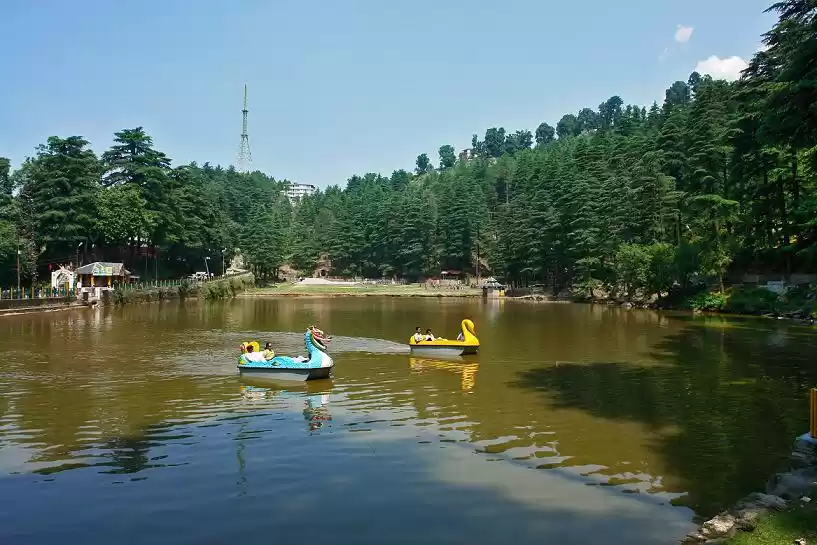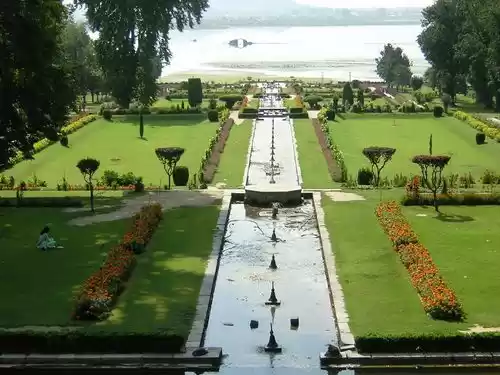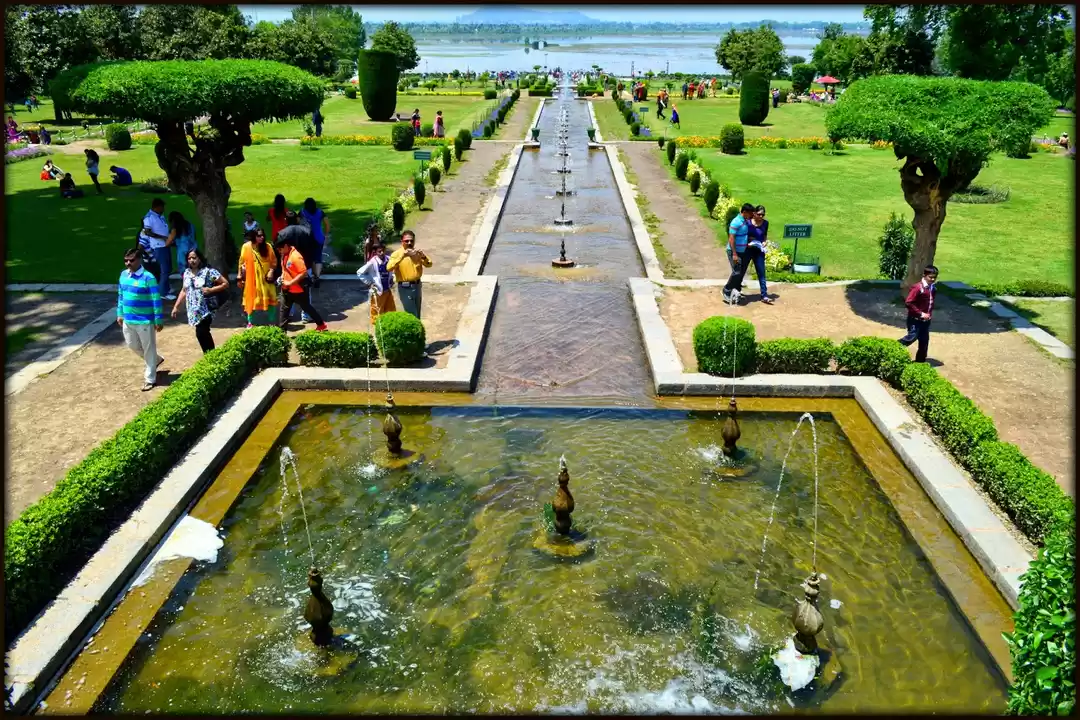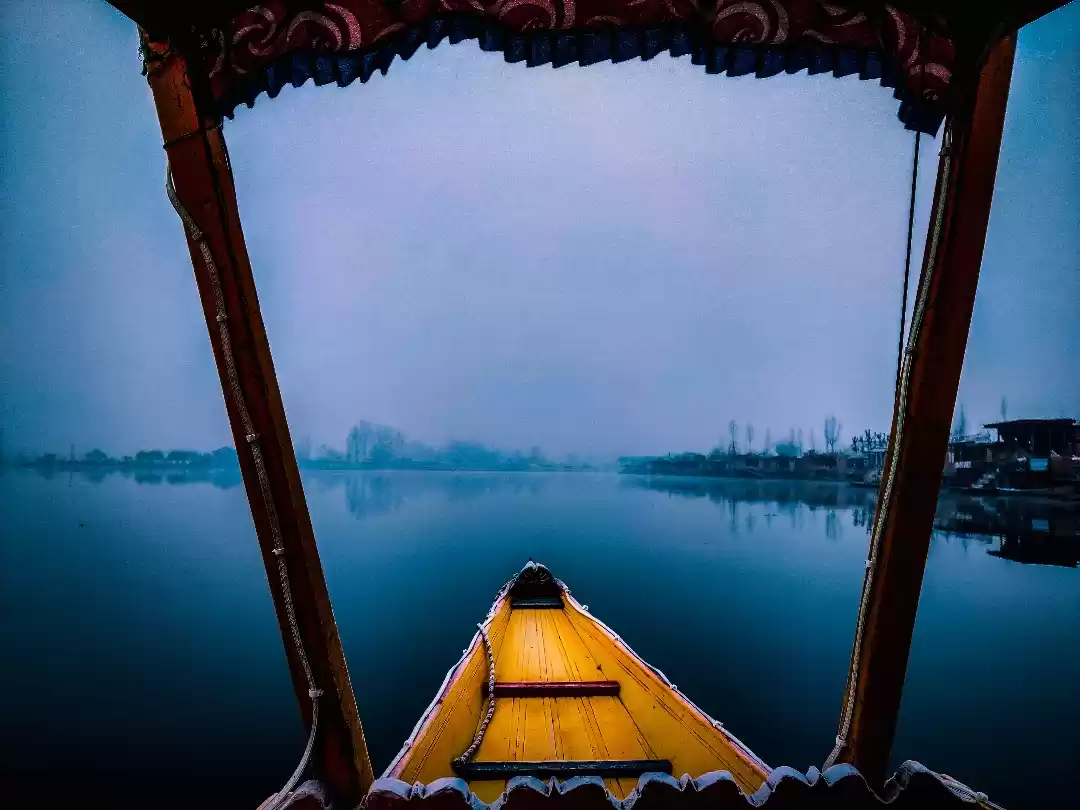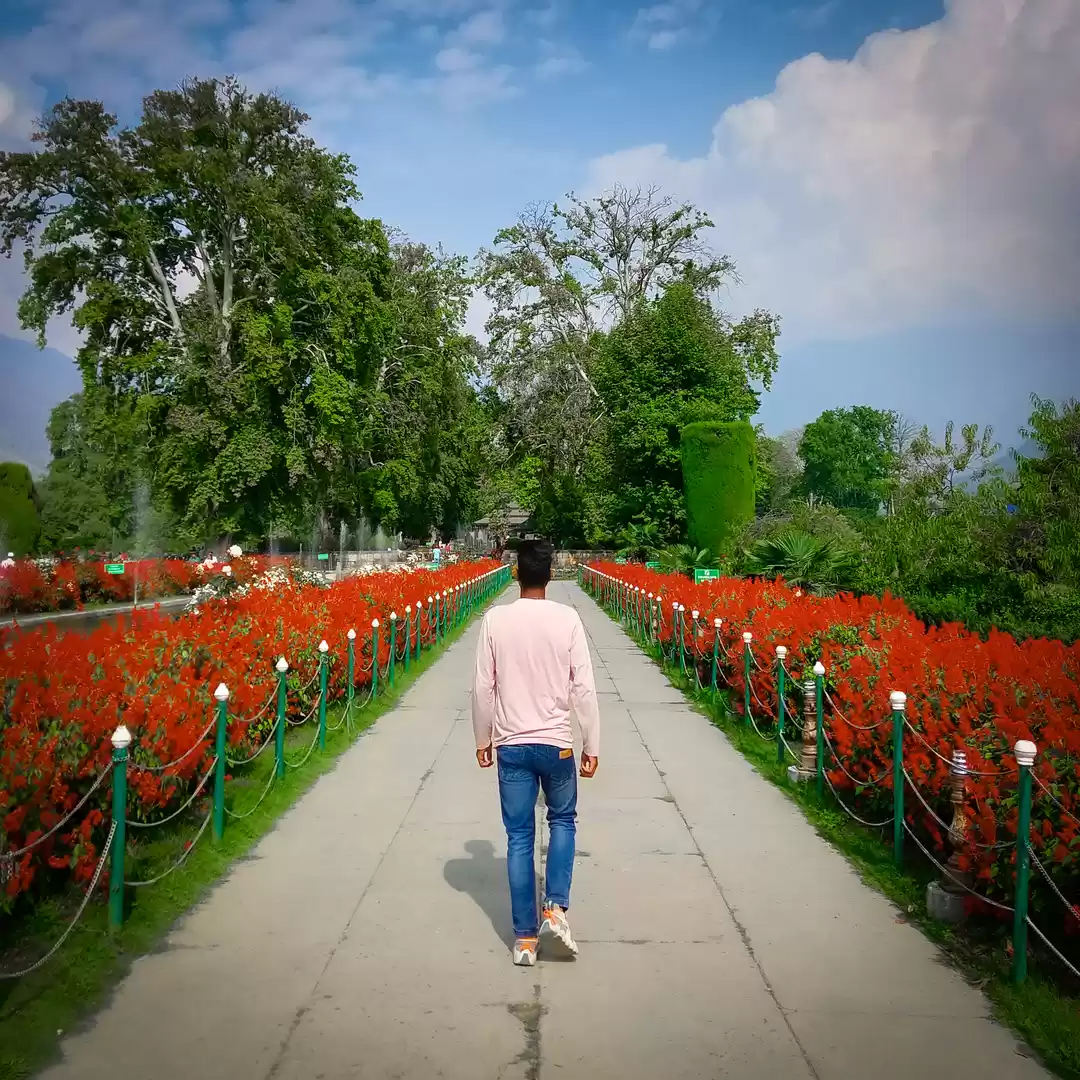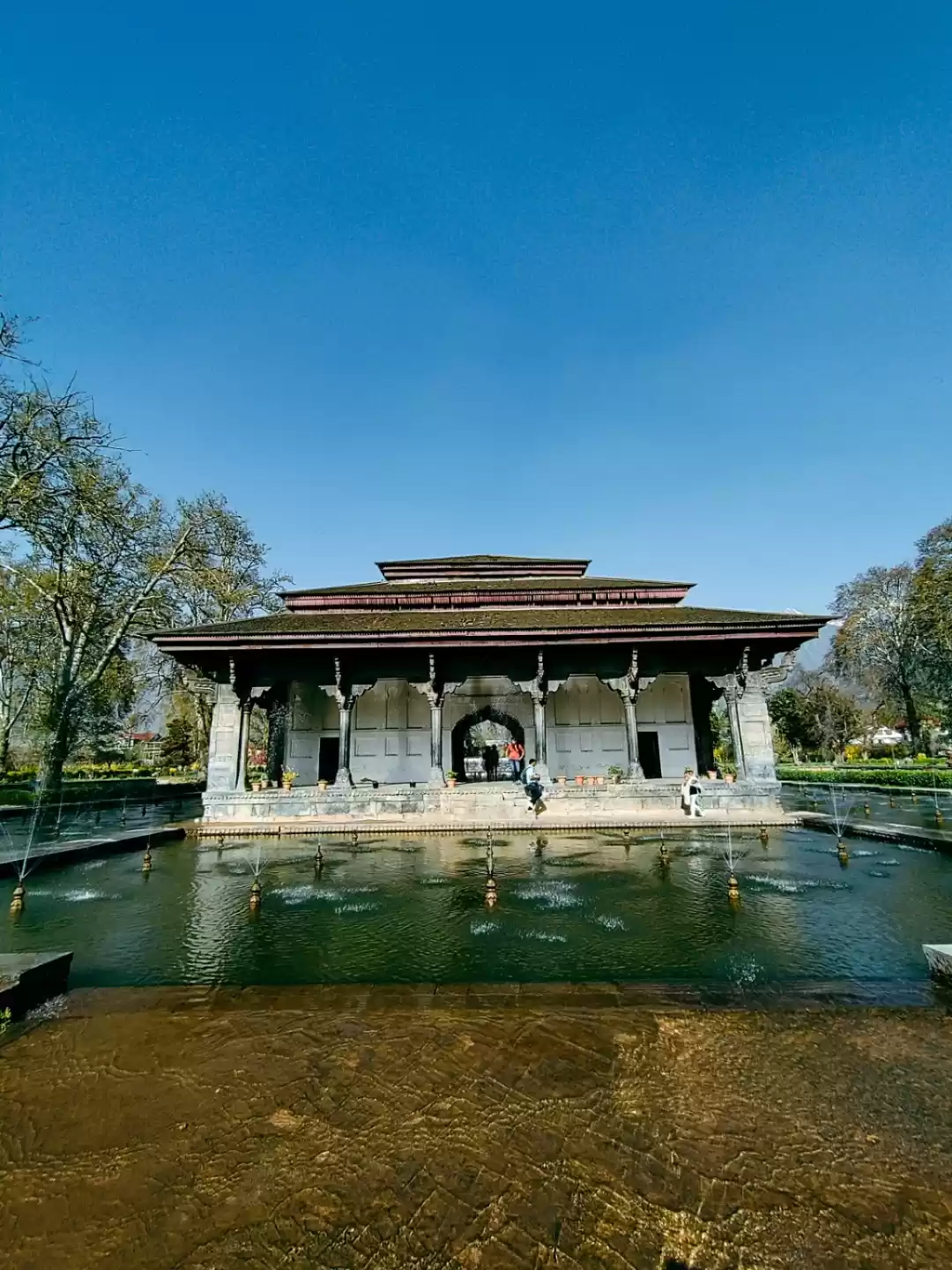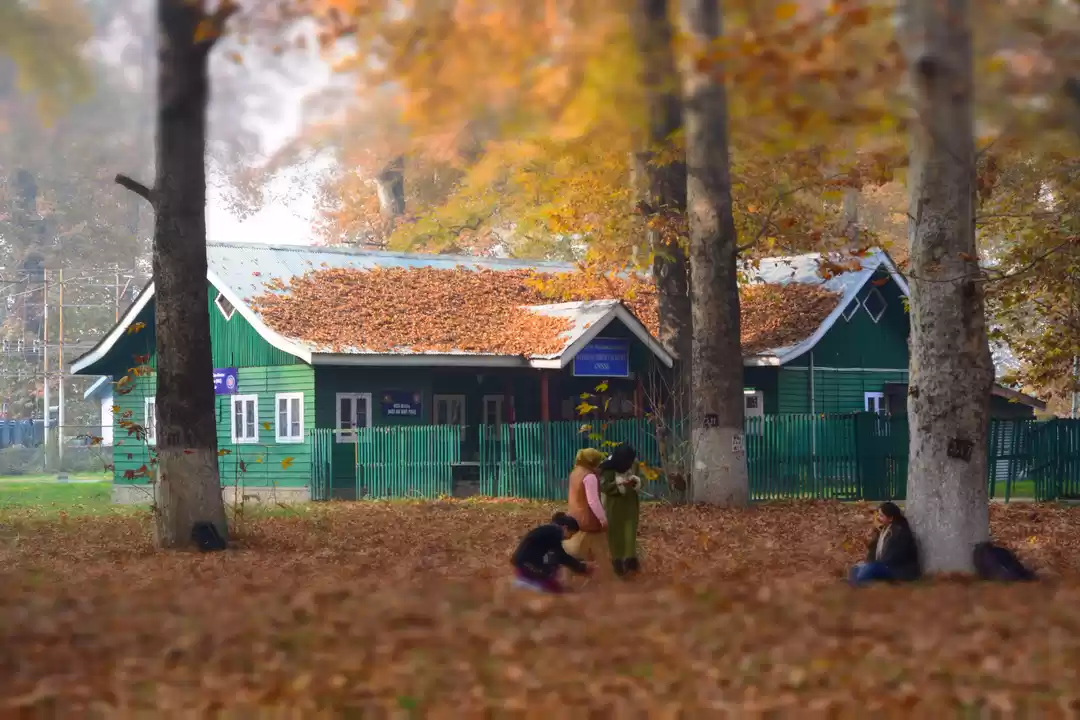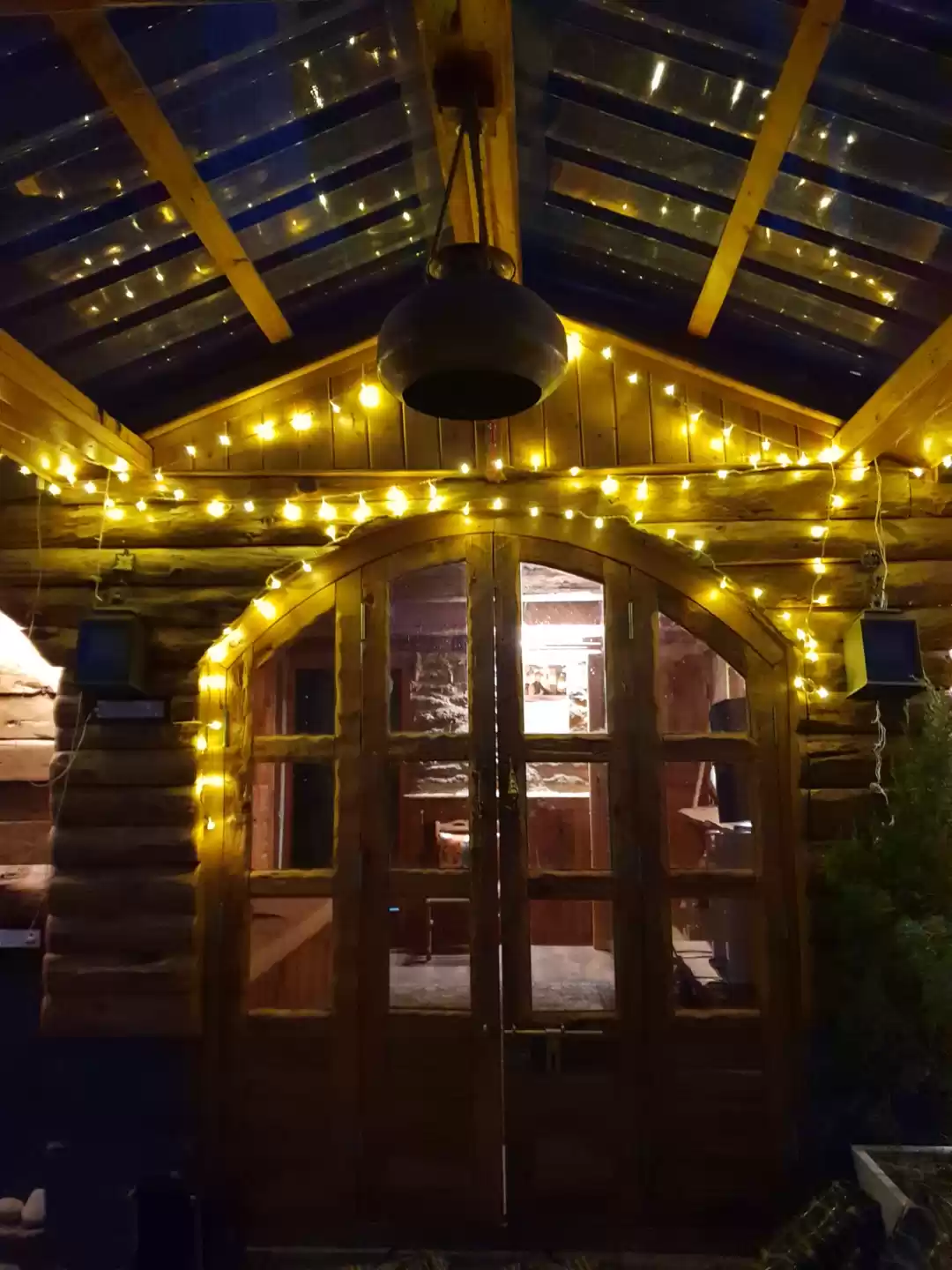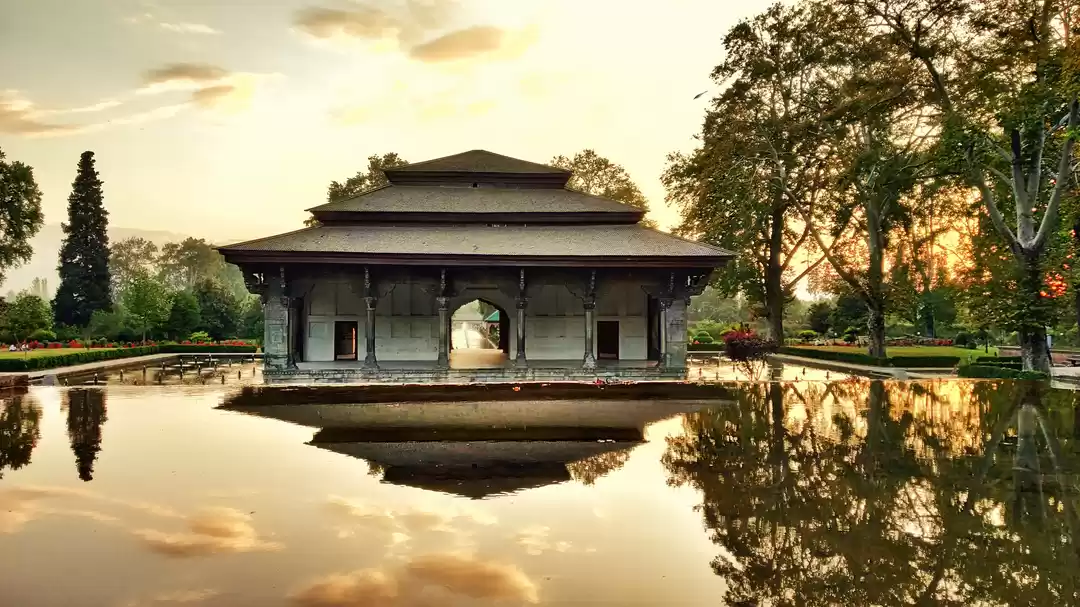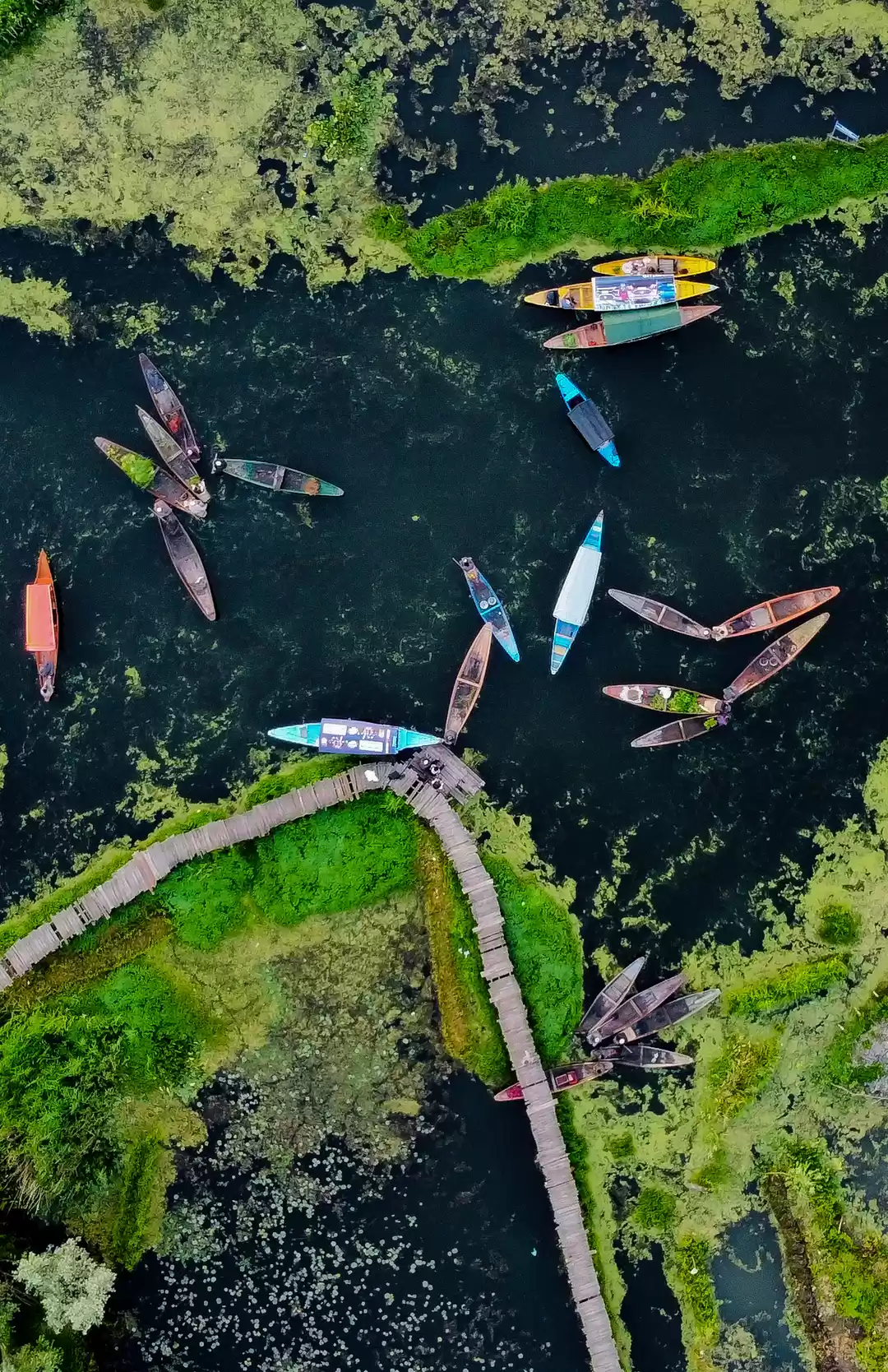Have you ever wondered what it would be like to walk in the footsteps of the Mughal emperors and their queens? To witness the beauty and splendor of their royal gardens, where they spent their summers in bliss and harmony? To experience the magic and romance of their love stories, that have inspired generations of poets and artists?
If you have, then you must visit Shalimar Bagh Srinagar, one of the most beautiful and famous Mughal gardens in India. Shalimar Bagh, which means “the garden of love” or “the abode of joy”, was built by Jahangir for his beloved wife Nur Jahan in 1619, and became their favorite summer residence and court. It is a masterpiece of Persian and Mughal architecture, design, and art, that showcases the elegance and sophistication of the Mughal era.
In this article, we will take you on a virtual tour of Shalimar Bagh Srinagar, and tell you everything you need to know about its history, layout, architecture, and attractions. We will also give you some practical tips and information for visiting the garden, and some suggestions for other nearby places and activities that you can enjoy in Srinagar. By the end of this article, you will be ready to plan your trip to Shalimar Bagh Srinagar, and experience its splendor and romance for yourself.

History of Shalimar Bagh
Origin
The origin of Shalimar Bagh dates back to the 16th century, when the Mughal emperor Akbar visited Kashmir and was enchanted by its natural beauty and climate. He decided to build several gardens in the valley, following the concept of charbagh (four gardens), which was inspired by the Persian gardens. He also annexed Kashmir to the Mughal empire, and made it a part of his domain.
However, it was his son and successor, Jahangir, who truly fell in love with Kashmir, and made it his second home. He was especially fond of Dal Lake, the largest and most scenic lake in Srinagar, and often stayed on a houseboat on its waters. He also had a passion for gardening, and wanted to create a garden that would reflect his love for nature and his wife, Nur Jahan.
Nur Jahan, whose original name was Mehr-un-Nissa, was one of the most influential and powerful women in the Mughal history. She was the daughter of a Persian nobleman, who rose to become the empress of India, and the co-ruler of Jahangir. She was also a patron of arts and culture, and a skilled architect and designer. She shared Jahangir’s love for Kashmir, and accompanied him on his frequent visits to the valley.
In 1619, Jahangir decided to build a garden for Nur Jahan on the banks of Dal Lake, as a token of his love and admiration. He chose a site that was previously owned by a Kashmiri nobleman, who had built a small garden there. Jahangir bought the land from him, and commissioned the construction of a grand and magnificent garden, that would surpass all the existing gardens in the valley. He named it Shalimar Bagh, which means “the garden of love” or “the abode of joy” in Persian.
Construction
The construction of Shalimar Bagh was supervised by Nur Jahan herself, who had a keen eye for detail and aesthetics. She designed the garden according to the Persian and Mughal style, and used local materials and craftsmen to execute her vision. She also incorporated elements from the Kashmiri culture and landscape, such as the chinar trees, the saffron flowers, and the shikaras (wooden boats).
The garden was built on a flat land, that was slightly elevated from the level of the lake. It was divided into three terraces, each with a different theme and purpose. The lowest terrace was called Farah Baksh, which means “the joyous garden”. It was meant for the public, and was open to everyone. The middle terrace was called Faiz Baksh, which means “the bountiful garden”. It was meant for the nobility, and was reserved for the guests and visitors of the emperor. The highest terrace was called Sheesh Mahal, which means “the palace of mirrors”. It was meant for the royalty, and was the private domain of Jahangir and Nur Jahan.
The garden was also connected to the lake by a canal, that was lined with marble and stone. The canal was fed by a natural spring, that was located on a hill behind the garden. The water from the spring was channeled through a series of pipes and aqueducts, that created a network of water channels, fountains, and cascades throughout the garden. The water was also used to irrigate the plants and flowers, that adorned the garden with their colors and fragrances.
The garden was completed in 1620, and was inaugurated by Jahangir and Nur Jahan, who celebrated their anniversary there. They also held their court and entertained their guests there, and enjoyed the beauty and tranquility of the garden. Shalimar Bagh became their favorite summer retreat, and they spent many happy and memorable moments there.
Expansion
Shalimar Bagh was not only loved by Jahangir and Nur Jahan, but also by their successors and descendants, who continued to visit and maintain the garden. The garden was also expanded and renovated by various Mughal rulers and governors, who added their own touches and features to the garden.
The most notable expansion was done by Shah Jahan, the son and successor of Jahangir, who is famous for building the Taj Mahal for his wife Mumtaz Mahal. Shah Jahan was also a lover of gardens, and wanted to enhance the beauty and grandeur of Shalimar Bagh. He extended the garden to the east, and added a fourth terrace, that was higher and larger than the previous three. He also added a baradari (pavilion) on the fourth terrace, that served as his royal residence and throne room. He also added more fountains, pavilions, and statues to the garden, and decorated them with marble, tiles, and paintings.
Shah Jahan also built a marble screen, that separated the fourth terrace from the third terrace, and created a sense of privacy and exclusivity. He also built a marble bridge, that connected the fourth terrace to the hill behind the garden, where he built a mosque and a hamam (bathhouse). He also planted more chinar trees, that gave shade and coolness to the garden.
Shah Jahan’s additions made Shalimar Bagh even more splendid and majestic, and earned him the praise and admiration of his contemporaries and historians. He also visited the garden frequently, and celebrated many festivals and occasions there, such as Diwali, Eid, and Navroz.
Renovation
Shalimar Bagh was not only expanded by the Mughals, but also renovated by them, as well as by other rulers and governors, who ruled over Kashmir after the decline of the Mughal empire. The garden suffered some damage and decay over the years, due to natural calamities, wars, and neglect. However, it was also restored and repaired by various people, who recognized its value and importance as a historical and cultural heritage.
One of the earliest renovations was done by Ali Mardan Khan, the governor of Kashmir under Shah Jahan, who repaired the water supply system of the garden, and improved its irrigation and drainage. He also added some new fountains and pavilions to the garden, and enhanced its landscaping and horticulture.
Another notable renovation was done by Abul Hasan Qutb Shah, the governor of Kashmir under Aurangzeb, the son and successor of Shah Jahan. He repaired the damage caused by an earthquake in 1668, and restored the garden to its original glory. He also added some new features to the garden, such as a black marble throne, a marble fountain, and a marble inscription, that recorded his name and deeds.
Other renovations were done by the Afghan, Sikh, and Dogra rulers, who ruled over Kashmir after the Mughals, and by the British, who had a presence in Kashmir during the colonial era. They also made some changes and additions to the garden, such as new plants, flowers, and statues. They also maintained and preserved the garden, and opened it to the public as a park.
The most recent renovation was done by the government of India, after the independence and partition of India in 1947. The garden was declared as a national monument, and was placed under the protection and conservation of the Archaeological Survey of India. The garden was also renovated and restored, and its original features and elements were highlighted and emphasized. The garden was also equipped with modern facilities and amenities, such as lighting, security, and sanitation.
Events and Legends
Shalimar Bagh is not only a garden of beauty and art, but also a garden of history and legend. The garden has witnessed many events and stories, that have shaped the history and culture of Kashmir and India. The garden has also inspired many legends and myths, that have enriched the imagination and folklore of Kashmir and India.
One of the most famous events that took place in Shalimar Bagh was the visit of Mahatma Gandhi, the father of the nation and the leader of the Indian independence movement, in 1947. He came to Kashmir to meet the Maharaja of Kashmir, Hari Singh, and to persuade him to join India after the partition of India and Pakistan. He also met the leaders of the National Conference, the political party of Kashmir, and discussed the future of Kashmir. He stayed in a houseboat on Dal Lake, and visited Shalimar Bagh, where he admired the beauty and serenity of the garden. He also planted a chinar sapling in the garden, as a symbol of peace and harmony.
Another famous event that took place in Shalimar Bagh was the shooting of the Bollywood movie Kashmir Ki Kali, starring Shammi Kapoor and Sharmila Tagore, in 1964. The movie was a romantic comedy, that featured the songs and scenes of Kashmir, and showcased the charm and culture of the valley. The movie was a huge hit, and made Shalimar Bagh a popular destination for tourists and filmmakers. The movie also featured a song, “Taarif Karoon Kya Uski”, that was filmed in Shalimar Bagh, and became one of the most iconic and memorable songs of Bollywood.
Shalimar Bagh is also associated with many legends and myths, that add to its mystique and allure. One of the most famous legends is that of Anarkali, the courtesan who fell in love with Prince Salim, the son of Akbar, and was buried alive by Akbar for her defiance. According to the legend, Anarkali was actually Nur Jahan’s sister, and was secretly rescued by Nur Jahan, who brought her to Kashmir, and hid her in Shalimar Bagh. There, Anarkali lived under the name of Sahiba, and became a gardener. She also met Jahangir, who was unaware of her identity, and fell in love with her again. However, their love was doomed, as Nur Jahan arranged Jahangir’s marriage with her own daughter, Ladli Begum, and sent Anarkali away from Kashmir. Anarkali died of a broken heart, and was buried in a tomb near Shalimar Bagh, where Jahangir visited her grave every year.
Another legend is that of the black marble throne, that was added by Abul Hasan Qutb Shah to the garden. According to the legend, the throne was originally made of white marble, and was gifted by Shah Jahan to Jahangir. However, Jahangir was so fond of the throne, that he refused to part with it, and kept it in Shalimar Bagh. Shah Jahan was angry and hurt by Jahangir’s betrayal, and cursed the throne, that it would turn black if anyone other than Jahangir sat on it. The curse came true, when Abul Hasan Qutb Shah, who was a usurper and a tyrant, sat on the throne, and the throne turned black. The throne remained black ever since, and became a symbol of Jahangir’s love and Shah Jahan’s wrath.
Layout and Architecture of Shalimar Bagh
Design and Structure
Shalimar Bagh is a masterpiece of Persian and Mughal architecture, design, and art, that reflects the elegance and sophistication of the Mughal era. The garden is spread over an area of 12.4 hectares, and is rectangular in shape. The garden is divided into four terraces, each with a different theme and purpose. The terraces are connected by stairs, bridges, and ramps, and are aligned along a central axis, that runs from the entrance to the baradari. The central axis is also marked by a canal, that runs through the entire length of the garden, and is fed by a natural spring. The canal is lined with marble and stone, and is adorned with fountains, jets, and cascades, that create a soothing and refreshing sound and sight. The canal is also crossed by several bridges, that allow the visitors to move from one terrace to another.
The garden is also surrounded by a high wall, that encloses and protects the garden from the outside world. The wall is punctuated by four gates, that serve as the entrances and exits to the garden. The main gate is located on the eastern side of the garden, and faces the Dal Lake. The main gate is also the most ornate and elaborate, and is decorated with tiles, paintings, and inscriptions. The main gate leads to a spacious courtyard, that welcomes the visitors to the garden. The courtyard also has a small museum, that displays some artifacts and relics related to the garden and its history.
The garden is also filled with plants and flowers, that add color and fragrance to the garden. The garden has a variety of flora, that includes roses, jasmine, lilies, tulips, iris, daffodils, hyacinths, and orchids. The garden also has many chinar trees, that are native to Kashmir, and are considered as the symbol of the valley. The chinar trees provide shade and coolness to the garden, and also change their colors according to the seasons. The garden also has many fruit trees, such as apple, pear, peach, plum, apricot, and cherry, that bear delicious and juicy fruits.
Terraces
The four terraces of Shalimar Bagh are the main attractions of the garden, and each has a different theme and purpose. The terraces are:
Farah Baksh: The lowest and the largest terrace, that is meant for the public, and is open to everyone. It is also called the joyous garden, as it is full of joy and happiness. It has a length of 139 meters, and a width of 86 meters. It has 410 fountains, that are arranged in four rows, and create a spectacular display of water and light. It also has four pavilions, that are located at the corners of the terrace, and serve as resting and viewing points. The pavilions are named after the seasons, and are decorated accordingly. The pavilions are: Diwan-e-Bahar (the spring pavilion), Diwan-e-Khizan (the autumn pavilion), Diwan-e-Shita (the winter pavilion), and Diwan-e-Harir (the summer pavilion).
Faiz Baksh: The middle and the second largest terrace, that is meant for the nobility, and is reserved for the guests and visitors of the emperor. It is also called the bountiful garden, as it is full of bounty and abundance. It has a length of 113 meters, and a width of 76 meters. It has 152 fountains, that are arranged in two rows, and create a graceful and elegant display of water and light. It also has two pavilions, that are located at the ends of the terrace, and serve as reception and entertainment halls. The pavilions are named after the flowers, and are decorated accordingly. The pavilions are: Gulabi Bagh (the rose garden), and Bagh-e-Faiz (the garden of grace).
Sheesh Mahal: The highest and the third largest terrace, that is meant for the royalty, and is the private domain of Jahangir and Nur Jahan. It is also called the palace of mirrors, as it is full of mirrors and glass. It has a length of 80 meters, and a width of 50 meters. It has 105 fountains, that are arranged in a single row, and create a dazzling and sparkling display of water and light. It also has a pavilion, that is located at the center of the terrace, and serves as the royal residence and throne room. The pavilion is named after the mirrors, and is decorated accordingly. The pavilion is: Sheesh Mahal (the palace of mirrors).
Baradari: The fourth and the highest terrace, that was added by Shah Jahan, and is higher and larger than the previous three. It is also called the imperial garden, as it is the most splendid and majestic of all. It has a length of 142 meters, and a width of 108 meters. It has 96 fountains, that are arranged in a single row, and create a magnificent and grand display of water and light. It also has a baradari, that is located at the center of the terrace, and serves as the royal residence and throne room of Shah Jahan. The baradari is a square structure, that has 12 arches on each side, and is made of marble and stone. The baradari is also decorated with tiles, paintings, and carvings, and has a black marble throne, that is placed on a platform.

Features
The four terraces of Shalimar Bagh are also adorned with various artistic and architectural features, that enhance the beauty and charm of the garden. Some of the features are:
Water Channels: The water channels are the lifeline of the garden, and run through the entire length and width of the garden. They are fed by a natural spring, that is located on a hill behind the garden. The water channels are lined with marble and stone, and have different shapes and sizes, such as straight, curved, zigzag, and circular. The water channels also have different names, such as Shah Nahar (the royal canal), Chini Khanah (the china house), and Abshar (the waterfall).
Fountains: The fountains are the highlight of the garden, and create a stunning and spectacular display of water and light. They are located along the water channels, and have different shapes and sizes, such as round, square, octagonal, and star-shaped. The fountains also have different names, such as Gulab Lari (the rose necklace), Moti Jhar (the pearl shower), and Sawan Bhado (the monsoon rain).
Pavilions: The pavilions are the resting and viewing points of the garden, and provide shade and comfort to the visitors. They are located at the corners and ends of the terraces, and have different shapes and sizes, such as rectangular, hexagonal, and octagonal. The pavilions also have different names, such as Diwan-e-Aam (the hall of public audience), Diwan-e-Khas (the hall of private audience), and Diwan-e-Shifa (the hall of healing).
Frescoes: The frescoes are the paintings that adorn the walls and ceilings of the pavilions and the baradari. They depict various scenes and themes, such as floral motifs, geometric patterns, hunting scenes, court scenes, and mythological stories. The frescoes also use various colors and styles, such as blue, green, red, gold, and Persian, Mughal, and Kashmiri.
Carvings: The carvings are the sculptures that embellish the pillars and arches of the pavilions and the baradari. They depict various figures and forms, such as animals, birds, flowers, fruits, and humans. The carvings also use various materials and techniques, such as marble, stone, wood, and metal.
Statues: The statues are the ornaments that decorate the fountains and the water channels. They depict various objects and symbols, such as lions, elephants, fish, lotus, and sun. The statues also use various materials and colors, such as copper, brass, and silver.
Tips and Information for Visitors
If you are planning to visit Shalimar Bagh Srinagar, here are some practical and useful tips and information for you:
Timings: The garden is open from 9:30 am to 6:30 pm in summer, and from 10:00 am to 5:00 pm in winter. The garden is closed on Fridays.
Entry Fee: The entry fee is Rs. 10 for Indian nationals, and Rs. 100 for foreign nationals. The entry fee is waived for children below 12 years of age, and senior citizens above 65 years of age.
Duration: The average duration of the visit is 2 to 3 hours, depending on your interest and pace. You can also spend more time in the garden, if you want to relax and enjoy the scenery.
Best Time: The best time to visit the garden is from April to October, when the weather is pleasant and the flowers are in full bloom. You can also visit the garden during the festivals and occasions, such as Diwali, Eid, and Navroz, when the garden is illuminated and decorated with lights and candles.
What to Wear: You can wear comfortable and casual clothes, that suit the weather and the season. You can also wear traditional and colorful clothes, that match the mood and the theme of the garden. You should also wear shoes that are easy to walk and climb, as the garden has stairs and slopes.
What to Carry: You should carry a water bottle, a hat, a sunscreen, and a camera, to keep yourself hydrated, protected, and capture the memories. You should also carry some cash, as there are no ATMs or card machines in the garden. You should also carry some snacks and drinks, as there are no cafes or restaurants in the garden.
How to Reach: The garden is located on the eastern side of Dal Lake, and is easily accessible by road, rail, and air. You can reach the garden by:
Car: You can drive to the garden, as there is ample parking space available near the main gate. The garden is about 15 km from the city center, and 25 km from the airport. You can also hire a taxi or a cab, that will charge you around Rs. 300 to Rs. 500 for a one-way trip.
Bus: You can take a bus to the garden, as there are frequent and regular buses that ply from the city center and the airport. The bus fare is around Rs. 10 to Rs. 20 per person. The nearest bus stop is Shalimar Chowk, which is about 500 meters from the main gate.
Shikara: You can also take a shikara, which is a wooden boat, that will take you to the garden from the Dal Lake. The shikara ride is a unique and enjoyable way to reach the garden, as you can admire the beauty and tranquility of the lake and the mountains. The shikara fare is around Rs. 100 to Rs. 200 per person, depending on the distance and the season.
Nearby Attractions and Activities
If you want to explore more of Srinagar and its attractions and activities, here are some suggestions and recommendations for you:
Nishat Bagh: Nishat Bagh is another Mughal garden, that is located on the opposite side of Dal Lake, and is about 4 km from Shalimar Bagh. It was built by Asif Khan, the brother of Nur Jahan, and is also known as the garden of bliss. It is the second largest Mughal garden in Kashmir, and has 12 terraces, that represent the 12 zodiac signs. It also has a splendid view of the Dal Lake and the Zabarwan mountains.
Chashme Shahi: Chashme Shahi is another Mughal garden, that is located on the eastern side of Dal Lake, and is about 6 km from Shalimar Bagh. It was built by Ali Mardan Khan, the governor of Kashmir under Shah Jahan, and is also known as the royal spring. It is the smallest Mughal garden in Kashmir, and has three terraces, that are connected by waterfalls. It also has a natural spring, that is believed to have medicinal properties.
Dal Lake: Dal Lake is the largest and most scenic lake in Srinagar, and is also known as the jewel in the crown of Kashmir. It is a freshwater lake, that covers an area of 18 square kilometers, and has a depth of 6 meters. It is surrounded by mountains, gardens, and houseboats, that create a picturesque and serene landscape. It also has several islands, that are home to various birds and animals. You can enjoy a shikara ride on the lake, and admire the beauty and tranquility of the lake. You can also stay in a houseboat on the lake, and experience the luxury and comfort of the lake life.
Shankaracharya Temple: Shankaracharya Temple is an ancient Hindu temple, that is located on a hill behind Shalimar Bagh, and is about 8 km from the garden. It is dedicated to Lord Shiva, and is also known as the Jyesteshwara Temple or the Pas-Pahar Temple. It is believed to be built by King Sandiman in the 9th century, and renovated by Adi Shankaracharya in the 8th century. It is a stone structure, that has a circular sanctum, and a square porch. It also has a panoramic view of the city and the valley.
Conclusion
Shalimar Bagh Srinagar is a Mughal garden of love and romance, that was built by Jahangir for his beloved wife Nur Jahan. It is a masterpiece of Persian and Mughal architecture, design, and art, that showcases the elegance and sophistication of the Mughal era. It is also a garden of history and legend, that has witnessed many events and stories, that have shaped the history and culture of Kashmir and India.
If you want to experience the splendor and romance of Shalimar Bagh Srinagar, you should plan your visit to this romantic paradise. You will be amazed and enchanted by the beauty and charm of the garden, and will feel the love and joy of the Mughal emperors and their queens. You will also learn more about the history and culture of Kashmir and India, and will appreciate the heritage and legacy of the Mughal empire.
So, what are you waiting for? Book your tickets to Srinagar, and visit Shalimar Bagh Srinagar, the Mughal garden of love and romance. You will not regret it.


























